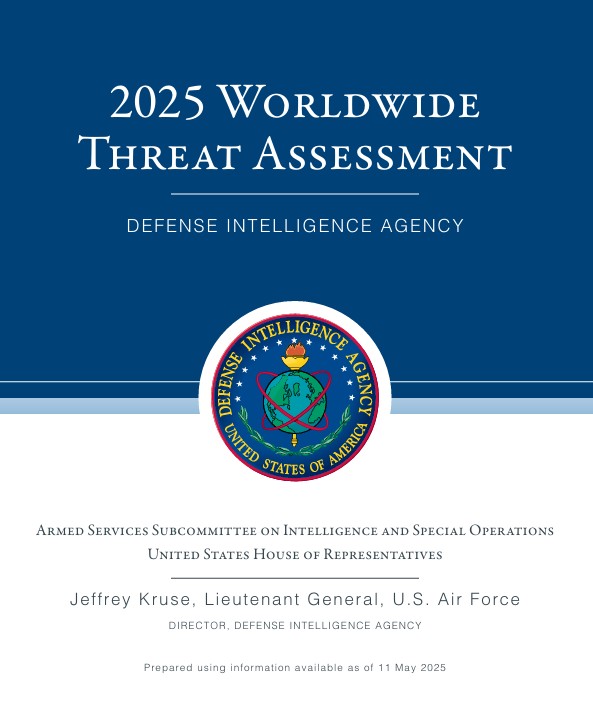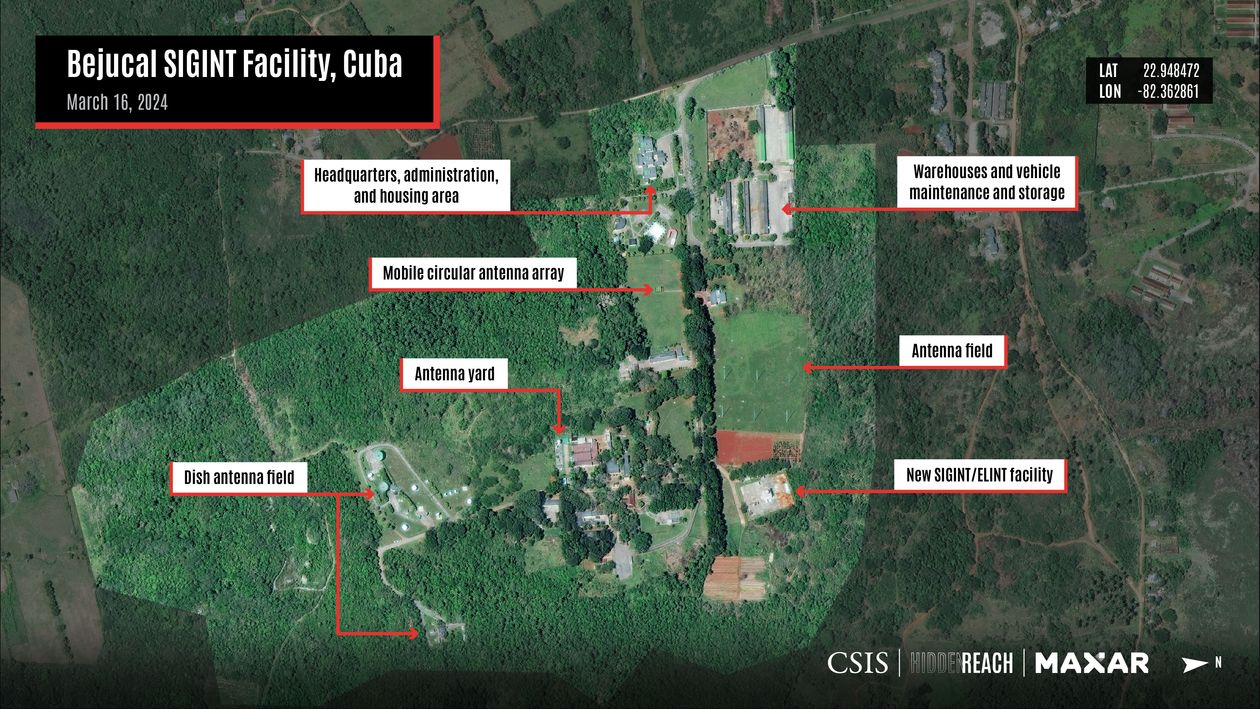La Evaluación de Amenazas Mundiales 2025 de la Agencia de Inteligencia de Defensa (DIA, por sus siglas en inglés) ofrece una visión razonablemente completa de los desafíos globales a la seguridad. Sin embargo, existen ciertas amenazas emergentes que se encuentran subrepresentadas o completamente omitidas. Permítame compartir algunas de mis inquietudes y reflexiones sobre las implicaciones de las mismas para la seguridad nacional de los Estados Unidos. No se trata de una evaluación clasificada, sino de un análisis y opinión fundamentados en inteligencia de fuentes abiertas y criterios expertos.
Amenazas Internas y Vulnerabilidades en Inteligencia Humana
El informe de la DIA pone el énfasis en los adversarios externos. Notablemente, subestima los riesgos que representan las amenazas internas. Un incidente reciente ocurrido dentro de la misma agencia que elaboró el informe 2025 pone de manifiesto esta vulnerabilidad. Nathan Vilas Laatsch, un especialista en tecnología de la información de 28 años, anteriormente empleado por la DIA, fue arrestado el 29 de mayo de 2025 por intentar transmitir información de defensa nacional a un representante del gobierno alemán. Laatsch trabajaba en la División de Amenazas Internas de la DIA y contaba con una autorización de seguridad de nivel ultrasecreto. El arresto fue consecuencia de una investigación del FBI iniciada tras una denuncia en marzo de 2025, que condujo a una operación encubierta en la que un agente del FBI se hizo pasar por funcionario extranjero. Esta violación pone de relieve deficiencias en la contrainteligencia, los protocolos de seguridad interna y los desafíos que implica detectar infiltrados o agentes maliciosos. Herramientas avanzadas como la analítica de comportamiento y los modelos de aprendizaje automático, tales como el deep evidential clustering, muestran potencial para identificar actividades anómalas indicativas de amenazas internas. Desafortunadamente, la integración de estas tecnologías en las agencias que conforman la comunidad de inteligencia sigue siendo peligrosamente inconsistente. Abordar esta deficiencia requiere no solo adoptar tecnología, sino también un cambio cultural hacia una detección interna más robusta y proactiva.
Inteligencia Artificial (IA) y Sistemas Autónomos como Amenazas Emergentes
El rápido desarrollo de la IA y los sistemas autónomos presenta tanto oportunidades como peligros. El informe de la DIA reconoce la proliferación tecnológica; sin embargo, carece de un análisis específico sobre el uso indebido de la IA en la guerra cibernética, el armamento autónomo y la manipulación informativa. Investigaciones académicas recientes proponen establecer un régimen de incidentes relacionados con la IA para monitorear y contrarrestar amenazas derivadas de sistemas de IA avanzados. Entre los trabajos revisados por pares destaca el del Dr. Alejandro Ortega: «Proponemos un régimen de incidentes de IA que ayude a contrarrestar las amenazas a la seguridad nacional derivadas de sistemas de inteligencia artificial… Nuestra ambición es permitir que una agencia gubernamental mantenga una conciencia integral de las amenazas derivadas de la IA y contrarreste rápidamente los riesgos que se generen para la seguridad nacional.» (Ortega, 2025) Marcos como el propuesto por Ortega buscan garantizar que los despliegues de IA no comprometan inadvertidamente la seguridad nacional y sugieren contramedidas eficaces para mitigar riesgos identificados. Dada la naturaleza de doble uso de estas tecnologías, urge establecer políticas integrales que regulen tanto su desarrollo como su posible militarización.
Fenómenos Aéreos No Identificados (UAP) y Seguridad Aeroespacial
Los Fenómenos Aéreos No Identificados (UAP, por sus siglas en inglés) han recibido creciente atención debido a sus posibles implicaciones para la seguridad nacional. El informe de la DIA no aborda este tema en absoluto. Una evaluación de 2021 de la Oficina del Director de Inteligencia Nacional (ODNI) documentó 144 incidentes UAP, de los cuales 143 quedaron sin explicación. Estas apariciones, frecuentemente cerca de instalaciones militares sensibles, generan preocupación respecto a la soberanía del espacio aéreo y vulnerabilidades en la vigilancia. La falta de comprensión clara sobre los UAP dificulta el desarrollo de contramedidas eficaces. Integrar el análisis de estos fenómenos en las evaluaciones generales de amenazas es esencial para garantizar la seguridad aeroespacial integral. No estoy sugiriendo que la comunidad de inteligencia deba embarcarse en la caza de objetos voladores no identificados (OVNIs), ya que es más probable que estos UAP sean mecanismos de recolección desplegados por servicios de inteligencia extranjeros adversarios. No obstante, dejar el asunto completamente sin tratar resulta cuestionable.
Amenazas Espaciales y Capacidades Antiespacio
El informe de la DIA aborda las capacidades espaciales y antiespacio. No obstante, no ofrece la amplitud ni la profundidad de análisis e interpretación especializada sobre las amenazas en evolución en este ámbito que cabría esperar. Esta omisión resulta sorprendente, dada su relevancia directa para los principales clientes de la DIA. La Evaluación de Amenazas Espaciales 2025 del Centro de Estudios Estratégicos e Internacionales (CSIS) detalla el crecimiento de las capacidades antiespacio de naciones como China y Rusia, incluidas armas antisatélite y tácticas de guerra electrónica. La militarización del espacio representa riesgos GRAVES para las comunicaciones satelitales, los sistemas de navegación y las operaciones de vigilancia. También pone en peligro la anticuada arquitectura del GPS, en la que se apoyan el comercio global y los organismos de seguridad nacional. Asegurar la resiliencia de los activos basados en el espacio requiere no solo avances tecnológicos, sino también normas y acuerdos internacionales que prevengan escaladas en esta nueva frontera.
La Evaluación de Amenazas Mundiales 2025 de la DIA proporciona conocimientos valiosos sobre los desafíos actuales a la seguridad global; sin embargo, la omisión o subrepresentación de amenazas internas, sistemas autónomos y de inteligencia artificial, fenómenos aéreos no identificados y amenazas espaciales integrales indica áreas que requieren atención exhaustiva. Atender estas brechas es crucial para una comprensión holística del panorama de amenazas en evolución y para formular contramedidas eficaces que salvaguarden la seguridad nacional.
Referencias
Departamento de Justicia. “Empleado del Gobierno de los EE.UU. arrestado por intentar proporcionar información clasificada a gobierno extranjero.” Departamento de Justicia de los EE.UU., 29 de mayo de 2025.
https://www.justice.gov/opa/pr/us-government-employee-arrested-attempting-provide-classified-information-foreign-government.
Nakashima, Ellen, y Devlin Barrett. “Empleado del Pentágono acusado de filtrar secretos a una nación extranjera.” The Washington Post, 30 de mayo de 2025.
https://www.washingtonpost.com/dc-md-va/2025/05/30/dod-classified-document-leak/.
Tucker, Eric. “Departamento de Justicia afirma que empleado del Pentágono intentó entregar información clasificada a gobierno extranjero.” Associated Press, 30 de mayo de 2025.
https://apnews.com/article/e60388df7f4e07a8d8d942d86513b27c.
Ortega, Alejandro. “Propuesta de un régimen de incidentes para rastrear y contrarrestar amenazas a la seguridad nacional planteadas por sistemas de IA.” arXiv preprint, 29 de marzo de 2025.
https://arxiv.org/abs/2503.19887.
Agencia de Inteligencia de Defensa. Declaración para el Acta: Evaluación Mundial de Amenazas. Presentada ante el Comité de Servicios Armados del Senado, marzo de 2025.
https://armedservices.house.gov/uploadedfiles/2025_dia_statement_for_the_record.pdf.
Centro de Estudios Estratégicos e Internacionales (CSIS). Evaluación de Amenazas Espaciales 2025. Washington, DC: CSIS, 2025.
https://www.csis.org/analysis/space-threat-assessment-2025.
Oficina del Director de Inteligencia Nacional (ODNI). Evaluación Preliminar: Fenómenos Aéreos No Identificados. Washington, DC: ODNI, 25 de junio de 2021.
https://www.dni.gov/files/ODNI/documents/assessments/Preliminary-Assessment-UAP-20210625.pdf.








